In this week’s issue of The Savvy Diabetic:
-
- T1D Barbie
- Carb Counting & AI
- MIT’s Implantable Glucagon Reservoir
- Wristband Sensor All-In-One Monitoring for Diabetes & Cardiovascular Care
- New Infrared Tech Pinpoints Lipohypertrophy
- Metabolic Muscle Differences in Males/Females Explain D Variations
- CBD Use & Elevated Liver Enzymes
- Medtronic Minimed New CEO & CFO
- Glucotrack’s Implantable Glucose Monitor Early Data
- GlucoModicum has positive data for needle-free CGM
- “Tech Neck” Epidemic
- US Needs More Endocrinologists
- Prescribing Kiwi Fruit for GI Patients
- Japanese Walking Improves Fitness
- Insurers’ Pledge To Reduce Prior Authorizations
Barbie launches first doll with Type 1 diabetes, glucose monitor by Melina Khan for USAToday.com, 8 July 2025.
 Barbie is aiming to expand its inclusivity with the launch of its first doll featuring Type 1 diabetes. The doll, part of Barbie’s Fashionistas line, comes complete with a continuous glucose monitor, insulin pump, and other features to represent individuals diagnosed with the chronic disease. The brand partnered with Breakthrough T1D, formerly JDRF, a diabetes research organization, to create the doll. Barbie said in a news release that it is also donating dolls to the Breakthrough T1D 2025 Children’s Congress, a biennial event that brings over a hundred children with Type 1 diabetes to Washington to meet with members of Congress.
Barbie is aiming to expand its inclusivity with the launch of its first doll featuring Type 1 diabetes. The doll, part of Barbie’s Fashionistas line, comes complete with a continuous glucose monitor, insulin pump, and other features to represent individuals diagnosed with the chronic disease. The brand partnered with Breakthrough T1D, formerly JDRF, a diabetes research organization, to create the doll. Barbie said in a news release that it is also donating dolls to the Breakthrough T1D 2025 Children’s Congress, a biennial event that brings over a hundred children with Type 1 diabetes to Washington to meet with members of Congress.
“Introducing a Barbie doll with type 1 diabetes marks an important step in our commitment to inclusivity and representation,” Krista Berger, senior vice president of Barbie and global head of dolls at Mattel, said in a release. “Barbie helps shape children’s early perceptions of the world, and by reflecting medical conditions like T1D, we ensure more kids can see themselves in the stories they imagine and the dolls they love.”
The doll with Type 1 diabetes includes:
-
-
-
- A continuous glucose monitor – a small, wearable device that measures a person’s blood-sugar levels – is on the doll’s arm and helps manage her Type 1 diabetes. Heart-shaped medical tape keeps the device in place, and she also has a phone that displays a CGM app to help track her blood-sugar levels.
- An insulin pump – a small, wearable medical device that allows for automated insulin dosing as needed – is attached to the doll’s waist.
- A blue polka dot top and matching skirt with ruffles, as a nod to the symbols that represent diabetes awareness.
- A pastel blue purse to carry any essentials, such as Type 1 diabetes supplies or snacks.
-
-
Read more:
Carb Counting with AI: A Deep Dive into How Different Models Stack Up by Tim Street for Diabettech.com, 7 July 2025.
How well do various AI models perform when asked to estimate carbohydrates and even suggest insulin doses based purely on images of food? We put several prominent AIs through their paces with a series of food-related queries.
Before we jump into the fascinating (and sometimes frustrating!) results, there’s an important note right off the bat: DeepSeek was unable to participate in this challenge. While a powerful language model, the current iteration of DeepSeek is not equipped with image analysis capabilities, meaning it could only parse text and was therefore unable to “see” the food pictures central to our test. This highlights a crucial technical limitation in some AI models when it comes to visual carb counting, making it an essential point for anyone looking to use AI for this purpose.
 Let’s see how its peers – ChatGPT, Claude, Copilot, Gemini, Grok, and Perplexity – fared in the ultimate carb-counting showdown!
Let’s see how its peers – ChatGPT, Claude, Copilot, Gemini, Grok, and Perplexity – fared in the ultimate carb-counting showdown!
We presented the AIs with three distinct food scenarios, asking them to estimate carbs and, where appropriate, suggest an insulin dose based on a consistent 1:18 insulin-to-carb ratio. This experiment offers invaluable insights for anyone managing diabetes and considering using AI for carb counting:
-
-
-
- AI is Not a Substitute for a Medical Professional: This is the most crucial takeaway.
- Visual Carb Counting is Inherently Challenging for AI: Without specific recipe details or exact weights, AI models provide estimates with significant ranges.
- More Data = Better Estimates: Providing additional information, such as the exact weight of a food item, significantly improved the accuracy and narrowed the carb estimates across all models. This suggests that combining AI with user input (like weighing food) is far more effective than relying on visual assessment alone.
- AI Can Misinterpret Images: AI models are not infallible when it comes to visual recognition. Always double-check what the AI “sees” versus what you know is on your plate.
- Variability Among Models: Different AI models have different training data, algorithms, and safety protocols. This leads to varying levels of caution and wildly different carb estimates for the same food item.
- Consider Fat and Sugar Effects: Some models correctly highlighted that high fat and sugar content can delay glucose spikes, potentially requiring adjusted insulin strategies like extended boluses. This shows a growing sophistication in AI’s understanding of food’s glycemic impact.
-
-
The Bottom Line: AI for carb counting holds immense potential, especially as models become more sophisticated at visual recognition and integrate with vast nutritional databases. However, for now, they are best used as a supplementary tool for generating initial estimates, not as a definitive guide for insulin dosing. As we’ve seen in this experiment, they’re often equally as effective at carb counting as we are. That’s to say, not very!
Always prioritize real-world data (nutrition labels, recipes, food scales), consult your healthcare team, and meticulously monitor your blood glucose to refine your carb-counting skills. The future of diabetes management with AI is exciting, but for now, remember: Stay safe, stay healthy, always double-check!
Read more:
Implantable device could save diabetes patients from dangerously low blood sugar by Anne Trafton for News.MIT.edu, 9 July 2025.
 MIT engineers have designed an implantable reservoir that can remain under the skin and be triggered to release glucagon when blood sugar levels get too low. This approach could also help in cases where hypoglycemia occurs during sleep, or for diabetic children who are unable to administer injections on their own.
MIT engineers have designed an implantable reservoir that can remain under the skin and be triggered to release glucagon when blood sugar levels get too low. This approach could also help in cases where hypoglycemia occurs during sleep, or for diabetic children who are unable to administer injections on their own.
“This is a small, emergency-event device that can be placed under the skin, where it is ready to act if the patient’s blood sugar drops too low,” says Daniel Anderson, a professor in MIT’s Department of Chemical Engineering, a member of MIT’s Koch Institute for Integrative Cancer Research and Institute for Medical Engineering and Science (IMES), and the senior author of the study. “Our goal was to build a device that is always ready to protect patients from low blood sugar. We think this can also help relieve the fear of hypoglycemia that many patients, and their parents, suffer from.” Siddharth Krishnan, a former MIT research scientist who is now an assistant professor of electrical engineering at Stanford University, is the lead author of the study, which appears today in Nature Biomedical Engineering.
Like many other protein or peptide drugs, glucagon tends to break down quickly, so the liquid form can’t be stored long-term in the body. Instead, the MIT team created a powdered version of the drug, which remains stable for much longer and stays in the reservoir until released.
Each device can carry either one or four doses of glucagon, and it also includes an antenna tuned to respond to a specific frequency in the radiofrequency range. That allows it to be remotely triggered to turn on a small electrical current, which is used to heat the shape-memory alloy. When the temperature reaches the 40-degree threshold, the slab bends into a U shape, releasing the contents of the reservoir.
Read more: Implantable device could save diabetes patients from dangerously low blood sugar
Wristband sensor provides all-in-one monitoring for diabetes and cardiovascular care by Gaby Clark for the University of California – San Diego and published by MedicalXPress.com, 10 July 2025.
A new wearable wristband could significantly improve diabetes management by continuously tracking not only glucose but also other chemical and cardiovascular signals that influence disease progression and overall health. The technology was published in Nature Biomedical Engineering.
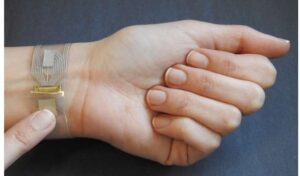 The flexible wristband consists of a microneedle array that painlessly samples interstitial fluid under the skin to measure glucose, lactate, and alcohol in real time using three different enzymes embedded within the tiny needles. Designed for easy replacement, the microneedle array can be swapped out to tailor wear periods. This reduces the risk of allergic reactions or infection while supporting longer-term use. Simultaneously, the wristband uses an ultrasonic sensor array to measure blood pressure and arterial stiffness, while ECG sensors measure heart rate directly from wrist pulses. These physiological signals are key indicators of cardiovascular risk, which is often elevated in people with diabetes but is rarely monitored continuously outside of a clinical setting.
The flexible wristband consists of a microneedle array that painlessly samples interstitial fluid under the skin to measure glucose, lactate, and alcohol in real time using three different enzymes embedded within the tiny needles. Designed for easy replacement, the microneedle array can be swapped out to tailor wear periods. This reduces the risk of allergic reactions or infection while supporting longer-term use. Simultaneously, the wristband uses an ultrasonic sensor array to measure blood pressure and arterial stiffness, while ECG sensors measure heart rate directly from wrist pulses. These physiological signals are key indicators of cardiovascular risk, which is often elevated in people with diabetes but is rarely monitored continuously outside of a clinical setting.
“Comprehensive and effective management of diabetes requires more than just a single glucose reading,” said An-Yi Chang, a postdoctoral researcher in the Aiiso Yufeng Li Family Department of Chemical and Nano Engineering at UC San Diego. Factors like diet, alcohol intake, exercise, and stress influence blood sugar and heart health in ways that traditional monitoring systems cannot fully capture. “By tracking glucose, lactate, alcohol and cardiovascular signals in real time, this pain-free wristband can help people better understand their health and enable early action to reduce diabetes risk,” added Chang, who is a co-first author on the study with Muyang Lin, Lu Yin and Maria Reynoso, all from the same department. The development of this wearable system was made possible by the collaboration of the research groups led by Joseph Wang and Sheng Xu, both professors in the Aiiso Yufeng Li Family Department of Chemical and Nano Engineering at the UC San Diego Jacobs School of Engineering.
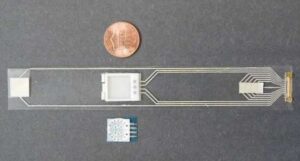 A smart device linked to the wristband displays live data streams from the sensors. It shows blood pressure, heart rate, and arterial stiffness alongside real-time readings of glucose, alcohol, and lactate levels. This enables wearers to see how daily activities—like meals, alcohol intake, or exercise—affect their body in real time and, in turn, obtain personalized insights into their metabolic and cardiovascular responses. Next steps include expanding the wearable system to include additional chemical and cardiovascular markers, and designing it to be powered by sweat or sunlight. The researchers also envision integrating machine learning algorithms to analyze the vast amounts of personal data the system collects.
A smart device linked to the wristband displays live data streams from the sensors. It shows blood pressure, heart rate, and arterial stiffness alongside real-time readings of glucose, alcohol, and lactate levels. This enables wearers to see how daily activities—like meals, alcohol intake, or exercise—affect their body in real time and, in turn, obtain personalized insights into their metabolic and cardiovascular responses. Next steps include expanding the wearable system to include additional chemical and cardiovascular markers, and designing it to be powered by sweat or sunlight. The researchers also envision integrating machine learning algorithms to analyze the vast amounts of personal data the system collects.
Read more: Wristband sensor provides all-in-one monitoring for diabetes and cardiovascular care
Bulsai Health: Pioneering Precision in Self-Administered Injections by Nicole Kinsey for StartUpHealth.com, 7 July 2025.
 Bulsai Health, born from personal experience, is poised to revolutionize this with a novel near-infrared (NIR) technology. Repeated injections in the same area cause a buildup of fat with fibrosis and scar tissue, known as lipohypertrophy (LH). This can occur over months or a few years. We know that, over time, injecting insulin into LH reduces absorption efficiency and makes it much more variable. This can cause higher, unstable blood glucose levels that are incredibly frustrating and dangerous to patients and increase healthcare costs due to greater insulin dosing.
Bulsai Health, born from personal experience, is poised to revolutionize this with a novel near-infrared (NIR) technology. Repeated injections in the same area cause a buildup of fat with fibrosis and scar tissue, known as lipohypertrophy (LH). This can occur over months or a few years. We know that, over time, injecting insulin into LH reduces absorption efficiency and makes it much more variable. This can cause higher, unstable blood glucose levels that are incredibly frustrating and dangerous to patients and increase healthcare costs due to greater insulin dosing.
Bill Ervin, a seasoned veteran of the Type 1 diabetes journey, knew firsthand the frustrating inconsistencies of daily injections. In November 2024, Ervin’s cousin, Jim Ervin, a PhD in mechanical engineering, conceived a novel, unprecedented method of utilizing infrared. The ability to precisely identify healthy tissue for injection held promise for individuals managing GLP-1 medications, grappling with allergies requiring regular shots, those undergoing HIV treatment, and even those navigating the complexities of fertility injections.
They demonstrated the novel technology’s ability to pinpoint lipohypertrophy using Bill Ervin as the test patient. The proof of concept was able to differentiate LH from healthy tissue, bolstering confidence in Bulsai’s innovation. Looking ahead, Bulsai is laser-focused on four key pillars: robust intellectual property, a refined prototype, FDA approval, and a clear path to reimbursement. Within the following year, they aim to solidify these foundations, paving the way for a Series A funding round or strategic partnerships with major players who recognize the profound impact of their technology.
Read more: Bulsai Health: Pioneering Precision in Self-Administered Injections
Metabolic differences in male and female muscles may explain diabetes variations by Deutsches Zentrum fuer Diabetesforschung DZD, and published by MedicalXPress.com, 7 July 2025.
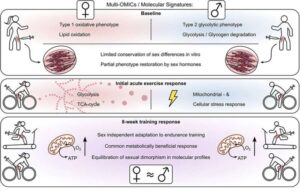 The skeletal muscles of men and women process glucose and fats in different ways. A study conducted by the University Hospital of Tübingen, the Institute for Diabetes Research and Metabolic Diseases of Helmholtz Munich, and the German Center for Diabetes Research (DZD) e.V. provides the first comprehensive molecular analysis of these differences. The results, published in Molecular Metabolism, possibly give an explanation for why metabolic diseases such as diabetes manifest differently in women and men, and why they respond differently to physical activity.
The skeletal muscles of men and women process glucose and fats in different ways. A study conducted by the University Hospital of Tübingen, the Institute for Diabetes Research and Metabolic Diseases of Helmholtz Munich, and the German Center for Diabetes Research (DZD) e.V. provides the first comprehensive molecular analysis of these differences. The results, published in Molecular Metabolism, possibly give an explanation for why metabolic diseases such as diabetes manifest differently in women and men, and why they respond differently to physical activity.
Skeletal muscles are far more than just “movement-driving motors.” They play a central role in glucose metabolism and, therefore, also in the development of type 2 diabetes. This is due to the fact that around 85% of insulin-dependent glucose uptake takes place in the muscles. This means that if muscle cells react less sensitively to insulin, for example, in the case of insulin resistance, glucose is less readily absorbed from the blood. This process is counteracted explicitly by physical activity.
Women’s and men’s muscles work differently: The degree to which muscles work differently in women and men has long been underestimated. It is precisely this issue that has now been investigated by researchers led by Simon Dreher and Cora Weigert.
Men react with more stress to exercise: The result: The first training session triggered a stronger stress response at the molecular level in men, which became manifest in the increased activation of stress genes and the increase in the muscle protein myoglobin in the blood. In addition, male muscles showed a distinct pattern of what are called fast-twitch fibers, which are designed for short-term, intensive exercise and preferably use glucose as an energy source.
Women had significantly higher amounts of proteins that are responsible for the absorption and storage of fatty acids, an indication of more efficient fat utilization. After eight weeks of regular endurance training, the muscles of both sexes matched, and the muscle fiber-specific differences decreased. At the same time, women and men produced more proteins that promote the utilization of glucose and fat in the mitochondria, the “power plants of the cells.”
Read more: Metabolic differences in male and female muscles may explain diabetes variations
Clinical Trial Sheds Light on Daily CBD Use and Liver Enzymes byJeff Minerd for MedPageToday.com, 7 July 2025.
[I recently became aware of an issue of T1D and autoimmune liver disease … and apparently … it is a “thing”! That’s why I am including this latest research about CBD use and elevated liver enzymes. If your labs show elevated liver enzymes and you are a user of CBD, you might want to discuss this with your medical team.]
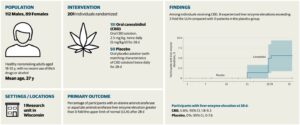 Daily use of cannabidiol (CBD) at doses commonly reported by consumers was associated with potentially dangerous increases in liver enzymes, a randomized clinical trial found.
Daily use of cannabidiol (CBD) at doses commonly reported by consumers was associated with potentially dangerous increases in liver enzymes, a randomized clinical trial found.
Among 201 healthy adult participants followed for 28 days, eight (5.6%) of those randomized to CBD had liver enzyme levels greater than three times the upper limit of normal (ULN) compared with none in the placebo group, said a team of FDA scientists led by Jeffry Florian, PhD, of the FDA’s Center for Drug Evaluation and Research in Silver Spring, Maryland.
“Given the growing popularity of unregulated CBD-containing products in the market and the ability of CBD to cause liver enzyme level elevations, inclusion of CBD use as part of routine medical screening could be considered, particularly in patients with existing liver conditions or those taking medications metabolized by the liver,” they added. “For patients presenting with elevated liver enzymes, CBD use could be considered in the differential diagnosis.”
Nathan Stall, MD, PhD, of the University of Toronto, and Kenneth Covinsky, MD, MPH, of the University of California, San Francisco, noted that data from the 2022 National Survey on Drug Use and Health indicated that more than 20% of U.S. adults reported using CBD in the past year. “Given the high use and increasing access to CBD without a prescription, the study by Florian et al raises several important concerns,” they wrote.
The results “underscore that clinicians should be aware of CBD-associated hepatoxic effects and screen patients with elevated liver enzyme levels for CBD use. Finally, regulators should balance the free market proliferation of CBD with the need for increased public awareness and clinical vigilance,” Stall and Covinsky said.
-
-
-
-
- Daily CBD use at typical consumer doses led to significant liver enzyme elevations in healthy adults.
- About 6% of CBD users had liver enzymes over three times the normal upper limit.
- CBD use is common in the U.S. and should be part of routine medical screening in certain patients.
-
-
-
Read more:
Medtronic names CFO for diabetes spinoff by Elise Reuter for MedTechDive.com, 8 July 2025.
 Medtronic has named Chad Spooner CFO of its diabetes business, beginning July 14. Medtronic plans to spin out the segment into a separate, publicly traded company called MiniMed, with the goal of completing the deal within 18 months. He was previously the CFO of the consumer goods company BIC for five years, where he played a key role in a strategy to drive innovation, growth, and efficiency. He also served as CFO of Slingshot Health, a startup offering a marketplace to connect patients with physicians, and held a senior finance role at GE Energy.
Medtronic has named Chad Spooner CFO of its diabetes business, beginning July 14. Medtronic plans to spin out the segment into a separate, publicly traded company called MiniMed, with the goal of completing the deal within 18 months. He was previously the CFO of the consumer goods company BIC for five years, where he played a key role in a strategy to drive innovation, growth, and efficiency. He also served as CFO of Slingshot Health, a startup offering a marketplace to connect patients with physicians, and held a senior finance role at GE Energy.
Que Dallara, who leads Medtronic’s diabetes business and will become CEO of MiniMed, said Spooner’s financial expertise and leadership “will be instrumental as we prepare for our next chapter as an independent company.”
Read more: Medtronic names CFO for diabetes spinoff
Implantable glucose monitor competitor emerges with early data by Elise Reuter for MedTechDive.com, 8 July 2025.
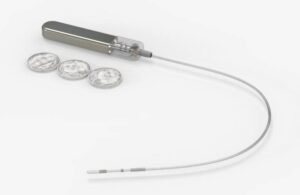 Glucotrack, a startup making an implantable glucose monitor, shared data from a first-in-human trial in June during the American Diabetes Association’s Scientific Sessions. The 10-person study, where patients were observed inpatient for four days and a week after device removal, met safety and performance endpoints.
Glucotrack, a startup making an implantable glucose monitor, shared data from a first-in-human trial in June during the American Diabetes Association’s Scientific Sessions. The 10-person study, where patients were observed inpatient for four days and a week after device removal, met safety and performance endpoints.
CEO Paul Goode said in an interview that the goal of the study was to show that the device and the procedure to implant it were safe. No serious adverse events were reported during the study. For accuracy, the results showed a mean absolute relative difference of 7.7%, which would make the device competitive with CGMs on the market. However, Goode cautioned that the data is very early and the results were not statistically significant. MARD is a measurement that compares blood glucose readings from a CGM to reference measurements, such as blood glucose from a fingerstick.
Glucotrack is taking an implantable device approach to address some of the challenges that people experience with wearable CGMs, Goode said, such as the lag time in readings when blood glucose changes quickly and irritation from adhesives.
Read more: Implantable glucose monitor competitor emerges with early data
GlucoModicum has positive data for needle-free CGM by Sean Whooley for DrugDeliveryBusiness.com, 2 July 2025.
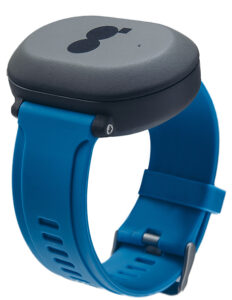 GlucoModicum announced positive outcomes from a clinical performance study of its needle-free continuous glucose monitor (CGM). Helsinki, Finland-based GlucoModicum said that the study helps put the company on “a clear path to commercialization.” The study involved 646 participant visits, including individuals with type 2 diabetes and healthy volunteers. The company says it represents one of the largest clinical evaluations of its kind in the CGM industry. Participants used the company’s next-generation, needle-free CGM across both standard multi-hour glucose tolerance tests and ambulatory conditions involving exercise and meals. All sensors used in the study featured GlucoModicum’s proprietary mass-manufacturing blueprint.
GlucoModicum announced positive outcomes from a clinical performance study of its needle-free continuous glucose monitor (CGM). Helsinki, Finland-based GlucoModicum said that the study helps put the company on “a clear path to commercialization.” The study involved 646 participant visits, including individuals with type 2 diabetes and healthy volunteers. The company says it represents one of the largest clinical evaluations of its kind in the CGM industry. Participants used the company’s next-generation, needle-free CGM across both standard multi-hour glucose tolerance tests and ambulatory conditions involving exercise and meals. All sensors used in the study featured GlucoModicum’s proprietary mass-manufacturing blueprint.
GlucoModicum reported a mean absolute relative difference (MARD, a measure of CGM accuracy) of 11.5%. This approaches the industry benchmark of 10% set by needle-based CGM, the company says. (This is not even close to the MARD for the current CGMs, which use needles to insert the sensor under the skin! Maybe “good enough” for T2D?)
The company now moves toward seeking CE mark for the CGM. It has already reported multiple regulatory milestones this year, including an audit that serves as a foundation for the final stages of approval. “GlucoModicum has solved the technical and manufacturing challenges that have long held back needle-free CGMs and done so at low cost, putting us at the forefront of the field and within reach of delivering the world’s first truly needle-free continuous glucose monitoring solution,” said Jokke Mäki, GlucoModicum CEO.
Read more: GlucoModicum has positive data for needle-free CGM
‘Tech Neck – The Modern Epidemic’ by Georgio Russo on GeogioRusso2.blogspot.com, 12 July 2025.
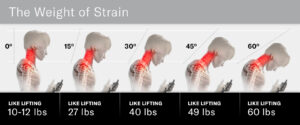 “Have you ever found yourself hunched over your phone, squinting at a text or email, only to realise you’ve been locked in that position for ages? Or maybe you’ve noticed a little ache in your neck after a marathon scroll through social media.
“Have you ever found yourself hunched over your phone, squinting at a text or email, only to realise you’ve been locked in that position for ages? Or maybe you’ve noticed a little ache in your neck after a marathon scroll through social media.
Welcome to the not-so-exclusive club of Tech Neck—the modern epidemic no one warned us about, yet one that affects almost everyone. Tech Neck describes the strain and discomfort in the neck and upper back caused by constantly looking down at our phones, laptops, and tablets. What starts as a quick glance at our screens often leads to hours with our heads angled forward, compressing our neck muscles and spine.
Did you know that your head weighs about 10-14 pounds (yes, up to a stone!)? When you’re sitting or standing up straight, your spine can support this weight comfortably. But for every inch you tilt your head forward, the pressure on your neck increases. Looking down at a 45-degree angle (typical for scrolling) makes your neck feel like it’s holding four times its weight! It’s like carrying a suitcase with your neck muscles alone. With hours spent texting, scrolling, or binge-watching on devices, it’s no wonder we’re collectively developing a new set of neck and back issues.
-
-
-
- Raise it Up: The easiest fix is to raise your screen to eye level. Hold your device higher, or use a laptop stand on your desk.
- Take the 20-20-20 Break: Every 20 minutes, take a 20-second break to look at something at least 20 feet away.
Do the “Chin Tuck” Exercise: This exercise can strengthen your neck muscles. Sit up straight, tuck your chin slightly, and pull your head back so your ears align with your shoulders (like creating a double chin, but intentionally). Hold for 5-10 seconds and repeat. - Watch Your Posture: Sit back in your chair with feet flat on the ground, shoulders relaxed, and back straight. If using a laptop, consider an external keyboard and mouse so you can keep the screen at eye level while keeping your hands comfortably low.
- Limit the “One-Handed Phone Hold”: Holding the phone in one hand while texting with the thumb of that same hand. It not only strains your wrist but often makes you lean forward. Try using both hands or holding your phone closer to eye level.
- Stretch it Out: Your neck and shoulders need some TLC. Simple stretches, like tilting your head side to side or doing shoulder rolls, can relieve tension. Stretch your arms behind your back to open up your chest—a great way to counteract forward tilt.
-
-
The Bottom Line: Tech Neck might be the modern epidemic no one talks about, but it’s real, relentless, and here to stay unless we do something about it. While we can’t completely escape screens, a few minor adjustments can keep our heads (and spines) held high. Next time you’re about to indulge in a text or scroll session, remember: your neck and spine are silently begging you to straighten up, raise that screen, and take a stretch.
Read more: ‘Tech Neck – The Modern Epidemic’
Helping Med Students Become Endocrinologists by Josh Baxt for News.Med.Miami.edu, 2 July 2025.
 The U.S. needs more endocrinologists to help treat diabetes, thyroid, and adrenal disorders, and many other pressing medical conditions. However, the trend is going in the other direction, as fewer U.S. medical school graduates are pursuing fellowships in the field.
The U.S. needs more endocrinologists to help treat diabetes, thyroid, and adrenal disorders, and many other pressing medical conditions. However, the trend is going in the other direction, as fewer U.S. medical school graduates are pursuing fellowships in the field.
There has been a 78% increase in endocrinology fellowship positions since 2010. But there has also been a 4% decline in medical school graduates entering endocrinology. As a result, some patients have to wait 90 days or even longer to see an endocrinologist.
To help solve this problem, the Endocrine Society established its Medical School Engagement Program. The initiative gives students unique opportunities to investigate endocrinology and, perhaps, choose it as their specialty.
“The program is born out of the realization that there’s a worldwide shortage of endocrinologists and patients sometimes have to wait a long time to see one,” said Zeina Hannoush, M.D., an assistant professor in the Division of Endocrinology, Diabetes and Metabolism who helps run the Miller School’s endocrinology fellowship and leads its Medical School Engagement Program. “There’s an epidemic of diabetes and endocrine diseases, and we really need more endocrine professionals to provide that care.”
The program provides a small grant to support endocrinology interest groups. Students explore the field through research, panel discussions, guest speakers, and other activities. All interest-group members receive free Endocrine Society memberships.
Read more: Helping Med Students Become Endocrinologists
I’m a gastroenterologist. Here’s why I tell my patients to eat this one fruit by Trisha Pasricha, MD for WashingtonPost.com, 7 July 2025.
 I’ve been “prescribing” a dose of two kiwis a day to my patients for years now. A small but mighty green or gold fruit, kiwis are bursting with nutrients: A single kiwi contains 80 percent or more of an adult’s daily vitamin C requirement and packs two to four grams of fiber. In addition to vitamins E and K and other beneficial antioxidants and phytochemicals, one of the kiwi’s most essential properties is an enzyme called actinidin. Actinidin is present in only a few dietary sources besides kiwis (including mango and pineapple), and it can help break down proteins, aiding in our digestion. Actinidin is so powerful that it’s used commercially as a meat tenderizer.
I’ve been “prescribing” a dose of two kiwis a day to my patients for years now. A small but mighty green or gold fruit, kiwis are bursting with nutrients: A single kiwi contains 80 percent or more of an adult’s daily vitamin C requirement and packs two to four grams of fiber. In addition to vitamins E and K and other beneficial antioxidants and phytochemicals, one of the kiwi’s most essential properties is an enzyme called actinidin. Actinidin is present in only a few dietary sources besides kiwis (including mango and pineapple), and it can help break down proteins, aiding in our digestion. Actinidin is so powerful that it’s used commercially as a meat tenderizer.
A kiwifruit marketer funded the study, but its methods were rigorous and showed clear, measurable outcomes.
In the 2022 study, scientists from three countries — New Zealand, Italy, and Japan — found that eating two green kiwis per day for four weeks helped people have more complete bowel movements. On average, people pooped between one and two more times each week.
For people with constipation at baseline, kiwis improved symptoms such as abdominal pain, indigestion, and straining during bowel movements, often even more so than psyllium, a type of fiber sold in powders and capsules over the counter. These people also reported an improvement in overall quality of life.
In 2011, Norwegian researchers randomized healthy volunteers to a month of eating either one or two gold kiwis daily. When the scientists analyzed DNA samples, they found fewer DNA strand breaks — a sign of improved fortitude that can theoretically reduce opportunities for cancerous growth. And indeed, after one month, the volunteers’ DNA had become about 30 percent more resistant to a kind of injury called oxidative damage that can lead to dangerous mutations.
Besides studying DNA, researchers also looked at plasma triglycerides, a kind of fat circulating in the bloodstream that increases heart attack risk. At the end of the month, triglycerides had decreased by about 13 percent. Though not a perfect study design, a 2023 meta-analysis of retrospective studies of kiwi and other fruit consumption found that people who ate more kiwis had a 13 percent decreased risk of colorectal cancer.
Read more: Kiwis can boost your gut health
Just 30 minutes a day of ‘Japanese walking’ may help you get in shape by Alexandra Frost for WashingtonPost.com, 13 July 2025.
 One particular technique, known as interval walking training (IWT) or “Japanese walking,” is getting renewed attention after going viral on TikTok. Nearly 20 years ago, a team led by Hiroshi Nose and other researchers from Japan published a study that found that middle-aged and older people who did high-intensity interval walking had lower blood pressure, stronger thigh muscles, and better aerobic capacity than walkers the same age who kept a more moderate, continuous pace. In the study, the volunteers did three minutes of fast walking followed by three minutes at a slower pace, for 30 minutes per day at least four days per week.
One particular technique, known as interval walking training (IWT) or “Japanese walking,” is getting renewed attention after going viral on TikTok. Nearly 20 years ago, a team led by Hiroshi Nose and other researchers from Japan published a study that found that middle-aged and older people who did high-intensity interval walking had lower blood pressure, stronger thigh muscles, and better aerobic capacity than walkers the same age who kept a more moderate, continuous pace. In the study, the volunteers did three minutes of fast walking followed by three minutes at a slower pace, for 30 minutes per day at least four days per week.
“One of the most surprising findings was that IWT markedly increased physical fitness and decreased blood pressure after the 5-month intervention, whereas these improvements were not observed in the moderate-intensity continuous walking group,” said Shizue Masuki, a researcher on the team and professor at Shinshu University Graduate School of Medicine in Matsumoto.
Since that report, which came out in 2007, more recent studies have been published, including one in 2023 of people with Type 2 diabetes and another in 2024 of people 65 and older. Those found that walkers who did IWT had improved cholesterol, flexibility, BMI, and cardiorespiratory endurance compared to control groups.
All of our experts shared a common piece of advice — start slow. You don’t have to jump into 30-minute interval sessions right away. Ali said even 15 minutes twice per day is still beneficial, and you can still try those intervals within that. Work up to the recommended amount of exercise for adults in the U.S. — 150 minutes of physical activity each week, for example, by doing 30 minutes at a time, 5 days per week. As always, talk to your doctor before beginning any new exercise program.
I plan to start Japanese Walking! Let me know if you will be “joining” me!
Read more: Just 30 minutes a day of ‘Japanese walking’ may help you get in shape
Insurers’ pledge to reduce prior authorization may be ‘major shift’ or ‘dog and pony show’ by Rob Volansky for Healio.com, 11 July 2025.
 In a recent joint statement, HHS Secretary Robert F. Kennedy, Jr., and CMS Administrator Mehmet Oz, MD, announced that health insurers have pledged to streamline and reduce prior authorization for patients and providers voluntarily. However, reactions to the June 23 announcement — among rheumatologists and the larger health care ecosystem — have been mixed. While some rheumatologists who spoke with Healio expressed cautious optimism, others said they harbor serious doubts about the impact of the promised reforms.
In a recent joint statement, HHS Secretary Robert F. Kennedy, Jr., and CMS Administrator Mehmet Oz, MD, announced that health insurers have pledged to streamline and reduce prior authorization for patients and providers voluntarily. However, reactions to the June 23 announcement — among rheumatologists and the larger health care ecosystem — have been mixed. While some rheumatologists who spoke with Healio expressed cautious optimism, others said they harbor serious doubts about the impact of the promised reforms.
“Prior authorization increases barriers to care for rheumatology patients by delaying access to necessary treatments and amplifying administrative burdens for rheumatologists, leading to physician burnout, widespread delays and denials, all of which result in an increased risk for long-term health consequences for patients,” read Langford’s statement. “We hope this pledge will indeed serve to increase timely access to care for patients by meaningfully reducing prior authorization obstacles, though the full impact of this measure remains to be seen.”
“Remains to be seen” would be the key phrase in this situation, according to Antonio Ciaccia, CEO of 46Brooklyn Research, a nonprofit based in Ohio that aims to make U.S. drug pricing data more accessible. In an interview with Healio, he added that the voluntary nature of the insurance companies’ stated reforms may, in practice, result in “no substantive changes.”
This probably applies to prior authorizations within the diabetes ecosystem. Are you optimistic?
Read more: Insurers’ pledge to reduce prior authorization may be ‘major shift’ or ‘dog and pony show’

